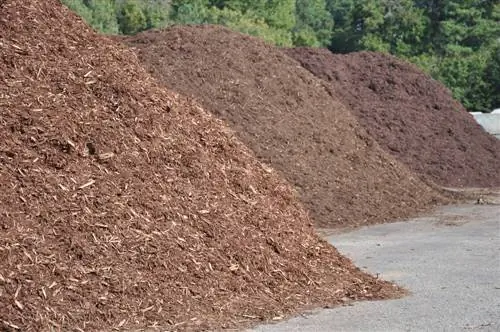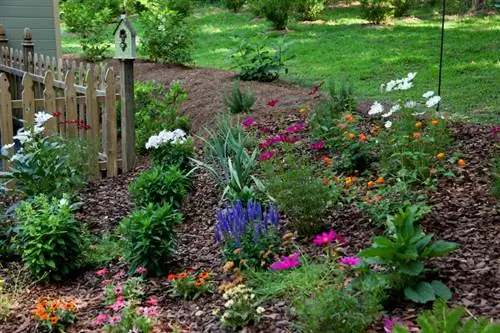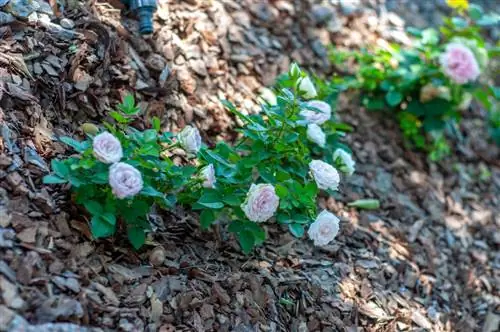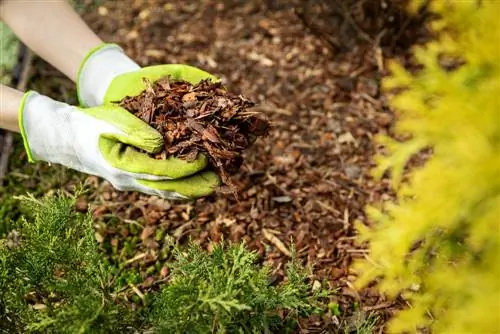- Author admin [email protected].
- Public 2023-12-16 16:46.
- Last modified 2025-01-23 11:22.
Bark mulch has many benefits and is very popular among gardeners. Seasonally, not only hardware stores and garden centers, but also discounters offer various products in different price ranges. However, when it comes to temptingly cheap offers, you should pay attention to a few aspects.

How do bark mulch qualities differ?
The differences in bark mulch lie in the composition, grain size, residue and smell. High-quality bark mulch contains fewer foreign substances, has an even grain size, is free of harmful substances and smells pleasantly of the forest. Look for the RAL quality seal for higher quality.
Interesting facts
There is no legally valid definition for the term bark mulch. Since the legislature has not set any limits for the proportion of foreign substances, the material does not have to consist exclusively of pieces of bark. In theory it is allowed if bark mulch does not contain any bark.
Seal of quality
When purchasing, pay attention to the RAL quality seal, which was formulated by the Quality Association for Substrates for Plants (GGS for short). Manufacturers undertake that their products are continuously analyzed. Since quality assurance involves additional costs, the price of the substrate increases. Therefore, low-cost providers refrain from such checks.
This is what the seal stands for:
- Bark mulch actually contains tree bark
- Specifications for grain size were met
- Product meets hygienic standards
This is where the quality differs
As this is a natural product, differences in composition and appearance are not uniform. Fluctuations are normal to a certain extent. However, you should check a few criteria to get an indication of product quality.
Composition
High-quality bark mulch is characterized by its purity. Filling materials are often included in cheap products because foreign substances can effectively reduce costs. It is not uncommon for you to find chopped wood residues, green compost, stones, plastic parts or broken glass in the packaging of discount suppliers.
Grain
The particle size must be within a specified range stated on the packaging. This extends from 18 to 60 millimeters. Manufacturers of discount products forego work steps such as sieving in order to save costs. Therefore, the substrate is made up of coarse pieces of bark and fine material. Such fine particles, like dust, increase the risk of waterlogging, meaning that adequate ventilation is not guaranteed.
Residues
While visual defects are easy to recognize, contamination and toxins can only be detected using laboratory methods. In addition to germs that reduce the compatibility of the material for plants, there can be residues of insecticides in the tree bark. This is more often the case with raw materials from abroad, because here pests such as the bark beetle are combated with non-degradable preparations.
Tip
The bark of trees sometimes contains high amounts of cadmium. In high-quality products from hardware stores and garden centers, the cadmium values of the products do not exceed the limit of 1.5 milligrams per kilogram of dry matter.
Smell
Another sign of lower quality is a strong or musty scent. This indicates that the bark mulch is older and is already subject to decomposition processes. Such aromas indicate suboptimal storage. A fresh substrate does not smell unpleasant or earthy, but rather pleasantly like a forest.






